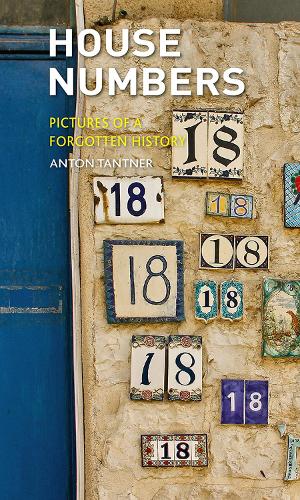
House Numbers: Pictures of a Forgotten History
(Hardback)
Publishing Details
House Numbers: Pictures of a Forgotten History
By (Author) Anton Tantner
Reaktion Books
Reaktion Books
1st January 2016
United Kingdom
Classifications
General
Non Fiction
History of architecture
728
Physical Properties
Hardback
200
Width 120mm, Height 200mm
Description
House numbers are small things that appear quietly on the walls, gates andporches of our homes and places of work. They seem to have come fromnowhere and are now taken for granted in everyday life. But house numbershave their own history one that is retrieved, assembled and presentedhere, for the first time, in vivid images from around the world.
Reviewed here on Blue Wolf book blog.
Reviews
perhaps the most interesting thing about a system that attempted to standardise and fix house numbers is the sheer variety of their expression from Venices distinctive black charcoal numbers on whitewashed squares to the blue-and-white enamelled plaques to be found throughout the cities of the old Habsburg empire . . . Some of these myriad modes of expression are expressed in the excellent new book House Numbers. * Financial Times *
The word enthralling isnt one to use lightly when embarking on a book review and it has probably rarely been used in connection with the prosaic matter of the numbering of houses. However, Anton Tantners book, House Numbers: Pictures of a Forgotten History fully earns the adjective . . . Rather more than half the book consists of photographs of house numbers ranging from Nought (in London) to 5,876 (in Venice) there are 14 pages of notes and suggestions for further reading on what few could have realised is such an historically rich subject. * Methodist Recorder *
The further you look into the humble house number the more fascinating information is revealed right up to the modern usage of addresses by such as Google and other marketing groups . . . A wonderful insight into our numbering of houses is presented in the pictures of ornate and beautiful plates and tiles at the rear of the book, with designs used for hundreds of years to denote the various styles of the numbering . . . Each plate is spectacular in its own right as it gives some small insight into the person, the country, the culture, the wealth of the residents and the particular time in history when the number was created. * Blue Wolf Reviews *
Historically, houses were numbered as a way to pin down an exact address and allowed tax collectors and court officials to know who was inside. The walls became transparent, in effect. There are all sorts of ways of numbering: the horseshoe system, the Philadelphia system, the metric, the decametric and on it goes. There are heaps of photos and lots of quirky information in this book. * Geelong Advertiser, Australia *
Sherlock Holmes famously observed that small details are often valuable clues to something larger. In similar fashion Anton Tantner, a historical sleuth, shows that the history of house numbers sheds more light on the Enlightenment as well as on the rise of the surveillance state. * Peter Burke, Emeritus Professor of Cultural History, University of Cambridge *
Author Bio
Anton Tantner is a historian at the University of Vienna and the author of many books.
